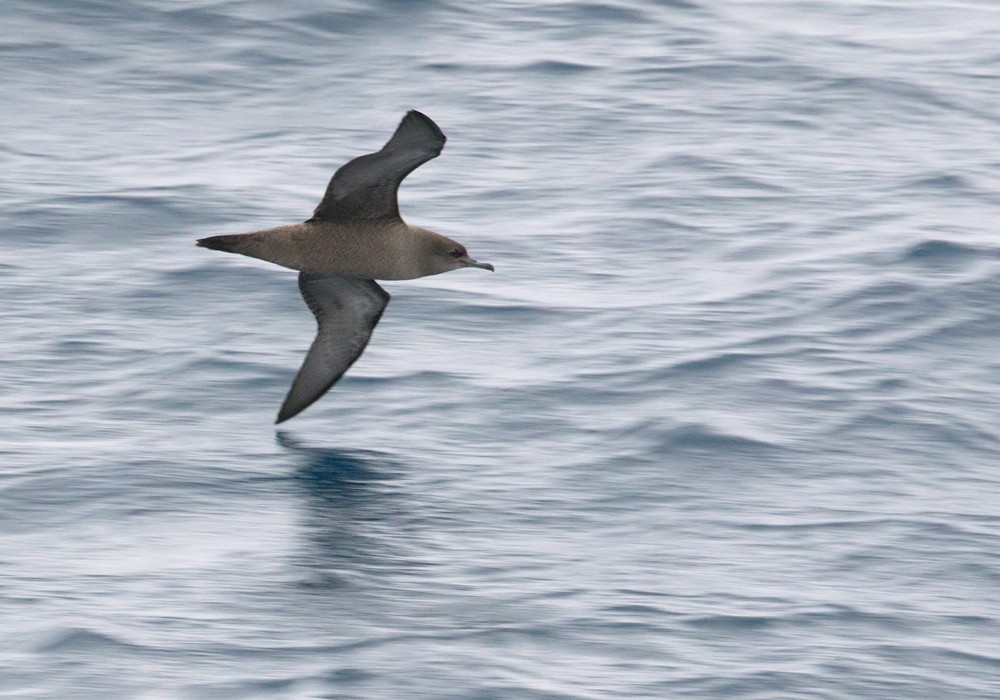Short-tailed Shearwater
A species of Typical Shearwaters Scientific name : Ardenna tenuirostris Genus : Typical Shearwaters
Short-tailed Shearwater, A species of Typical Shearwaters
Botanical name: Ardenna tenuirostris
Genus: Typical Shearwaters
Content
Description General Info
 Photo By Lars Petersson
Photo By Lars Petersson Description
The short-tailed shearwater or slender-billed shearwater (Ardenna tenuirostris; formerly Puffinus tenuirostris), also called yolla or moonbird, and commonly known as the muttonbird in Australia, is the most abundant seabird species in Australian waters, and is one of the few Australian native birds in which the chicks are commercially harvested. It is a migratory species that breeds mainly on small islands in Bass Strait and Tasmania and migrates to the Northern Hemisphere for the boreal summer. This shearwater appears to be related to the sooty and great shearwaters, which are also blunt-tailed, black-billed species, but its precise relationships are obscure (Austin, 1996; Austin et al., 2004). These are among the larger species of shearwater, which have been moved to a separate genus, Ardenna based on a phylogenetic analysis of mitochondrial DNA (Penhallurick & Wink, 2004). Each parent feeds the single chick for 2–3 days and then leaves for up to three weeks in search of food. These foraging trips can cover a distance of 1,500 km (930 mi) and mean the chick may be left unattended for over a week. When the chicks fledge they weigh around 900 g (2 lb), and may be heavier than their parents. In Tasmania, and especially on the muttonbird islands of the Furneaux Group, the chicks are harvested at this time for food and oil. The largest population in the world (2.8 million pairs - about 12% of the species) seems to be located on Babel Island. Adult birds foraging for food on the open ocean mistake plastic debris for food and then feed it to their chicks. This ingested plastic, as well as other factors, likely contribute to contamination of chicks. Thousands of Short-tailed shearwater fledglings are attracted to artificial lights during their maiden flights from nests to the open ocean. Fledglings are vulnerable to injury or death by collisions with human infrastructure and once grounded, to predation or becoming road casualties. Each austral winter, the shearwaters migrate to the seas off the Aleutian Islands and Kamchatka. In the austral spring, they travel down the coast of California before crossing the Pacific back to Australia. In 2020, a long distance vagrant was found in Ireland. This marked the first confirmed sighting of the species in the Western Palearctic. It was taken to a rehabilitation center and subsequently died; it is now deposited at the Natural History Museum of Ireland. 
Size
45 cm
Life Expectancy
30-39.9 years
Nest Placement
Burrow
Feeding Habits
Short-tailed Shearwater, a carnivorous and piscivorous bird, primarily feeds on fish and invertebrates. It exhibits unique foraging methods, diving from the air into the water to catch prey. Short-tailed Shearwater showcases a specialized preference for certain types of prey during different feeding times.
Habitat
Open ocean, islands close to shore
Nest Behavior
The breeding season for short-tailed Shearwater is from September to April. They first breed at 5-8 years and nest in colonies, mostly active at night. Both sexes excavate the burrow and share parental duties, including incubating the egg and rearing the chick.
Nest Characteristics
Short-tailed Shearwater nests are burrows dug in soil, often under grass or scrub on islands and parts of mainland Australia. The burrows lead to a nest chamber, which may be bare or lined with grasses. These sites are reused for several years.
Dite type
Piscivorous
General Info
Feeding Habits
Bird food type

 Photo By Lars Petersson
Photo By Lars Petersson Scientific Classification
Phylum
Chordates Class
Birds Order
Albatrosses and Petrels Family
Shearwaters and petrels Genus
Typical Shearwaters Species
Short-tailed Shearwater